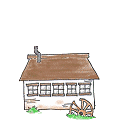


Companion Planting Guide by World Permaculture Association
will be released to subscribers in:
soon!



 2
2












 5
5




 4
4




Start with Helen Gardner's book, "Art Through the Ages." After that, explore art on Wikiart to discover new pieces on your own
Invasive plants are Earth's way of insisting we notice her medicines. Stephen Herrod Buhner
Everyone learns what works by learning what doesn't work. Stephen Herrod Buhner
 3
3




Christopher Weeks wrote:I know that you already know Wikipedia exists, so I'm assuming this doesn't work for you, but it's how I'd start and it might be a useful suggestion for anyone reading this down-stream. I'd go to https://en.wikipedia.org/wiki/Art_history and start reading. Then I'd follow links and links from links and lin...







 2
2




Anne Miller wrote:Maybe there is a used bookstore with some college textbooks on art history.
I saw this on Reddit:
Start with Helen Gardner's book, "Art Through the Ages." After that, explore art on Wikiart to discover new pieces on your own
Interesting subject for sure.







 5
5




 5
5




“If we are honest, we can still love what we are, we can find all the good there is to find, and we may find ways to enhance that good, and to find a new kind of living world which is appropriate for our time.” ― Christopher Alexander
 5
5











 2
2




r ranson wrote:So far, I've found Waldemar's videos to be the best for learning art history.
 4
4




Nonprofit Fundraising Consultant
Consensus Facilitator
 6
6




Nonprofit Fundraising Consultant
Consensus Facilitator

 4
4




Some places need to be wild
 2
2











 3
3




Melinda McBride wrote:The standard Art History 101 textbook since the 1960s is The History of Art, by H. W. Janson. It's been revised many times. It focuses on European art, with a bit of other regions. Lots of pictures (mostly B&W). I still have my old copy from the 1970s.
It will give you an overview and you can skim through the parts that look interesting.
Check your library, maybe your local college library, or find many used copies all over the internet.
When you're done reading it, it makes a good door stop.







 2
2











 2
2




r ranson wrote:
I found Janson's book at a thrift shop. Thanks to this thread, I knew to snatch it up.
It's a 1974 version, so hopefully it has enough to get me started.
It's also very heavy. Going to need to dedicate some reading space for this. I wish I wasn't such a slow reader.
Colour pictures would be nice too. Do later copies have colour?
Nonprofit Fundraising Consultant
Consensus Facilitator
 3
3




r ranson wrote:
Colour pictures would be nice too. Do later copies have colour?
 2
2




Nonprofit Fundraising Consultant
Consensus Facilitator

|
Not looking good. I think this might be the end. Wait! Is that a tiny ad?
Learn Permaculture through a little hard work
https://wheaton-labs.com/bootcamp
|







